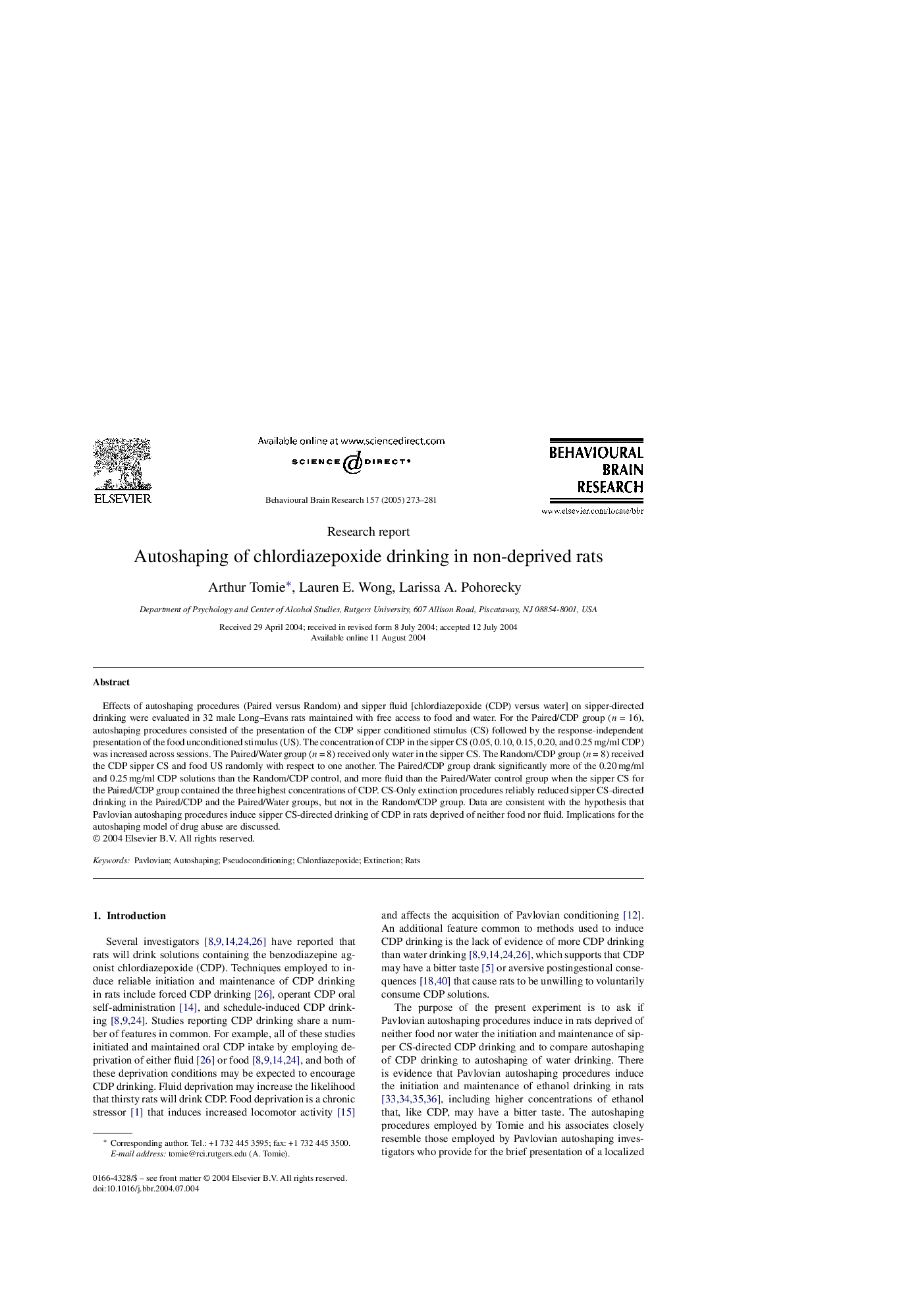| Article ID | Journal | Published Year | Pages | File Type |
|---|---|---|---|---|
| 9406849 | Behavioural Brain Research | 2005 | 9 Pages |
Abstract
Effects of autoshaping procedures (Paired versus Random) and sipper fluid [chlordiazepoxide (CDP) versus water] on sipper-directed drinking were evaluated in 32 male Long-Evans rats maintained with free access to food and water. For the Paired/CDP group (n = 16), autoshaping procedures consisted of the presentation of the CDP sipper conditioned stimulus (CS) followed by the response-independent presentation of the food unconditioned stimulus (US). The concentration of CDP in the sipper CS (0.05, 0.10, 0.15, 0.20, and 0.25Â mg/ml CDP) was increased across sessions. The Paired/Water group (n = 8) received only water in the sipper CS. The Random/CDP group (n = 8) received the CDP sipper CS and food US randomly with respect to one another. The Paired/CDP group drank significantly more of the 0.20Â mg/ml and 0.25Â mg/ml CDP solutions than the Random/CDP control, and more fluid than the Paired/Water control group when the sipper CS for the Paired/CDP group contained the three highest concentrations of CDP. CS-Only extinction procedures reliably reduced sipper CS-directed drinking in the Paired/CDP and the Paired/Water groups, but not in the Random/CDP group. Data are consistent with the hypothesis that Pavlovian autoshaping procedures induce sipper CS-directed drinking of CDP in rats deprived of neither food nor fluid. Implications for the autoshaping model of drug abuse are discussed.
Related Topics
Life Sciences
Neuroscience
Behavioral Neuroscience
Authors
Arthur Tomie, Lauren E. Wong, Larissa A. Pohorecky,
